Abstract
Water given off by the skin is classified as insensible and sensible perspiration. Under normal conditions about 600 to 700 c.c. is evaporated from the skin in twentyfour hours. The chief physiological significance of the perspiration is to assist in regulating the body temperature.
The constituents of perspiration are very variable. The average values calculated from the examination of fourteen male specimens and ten female specimens are given below:— [Table: see text]
Examination of the figures obtained for the sweat shed by rheumatic subjects shows no marked divergence from those recorded for normal subjects.
Lactic acid is stated to be present in relatively large amounts in sweat, but these results have not been confirmed.
Moss (1923) demonstrated the importance of the loss of chloride which occurred during continued sweating. He showed that symptoms of water-poisoning occurred when men engaged in hard work in hot places drank water freely.
Hancock, Whitehouse and Haldane (1930) point out that the percentage of chloride in sweat increases markedly with duration of sweating, and suggest that water poisoning is due to an alteration in the diffusion pressure of water in the body.
The secretion is under control of the nervous system, and is normally excited through stimulation of the centres by warm blood. The sweat-glands are innervated by fibres of the sympathetic system. Adrenaline has, however, no action on the glands, while pilocarpine excites and atropine paralyses. Recent investigations suggest that acetyl-choline is liberated at the nerve-endings.
Full text
PDF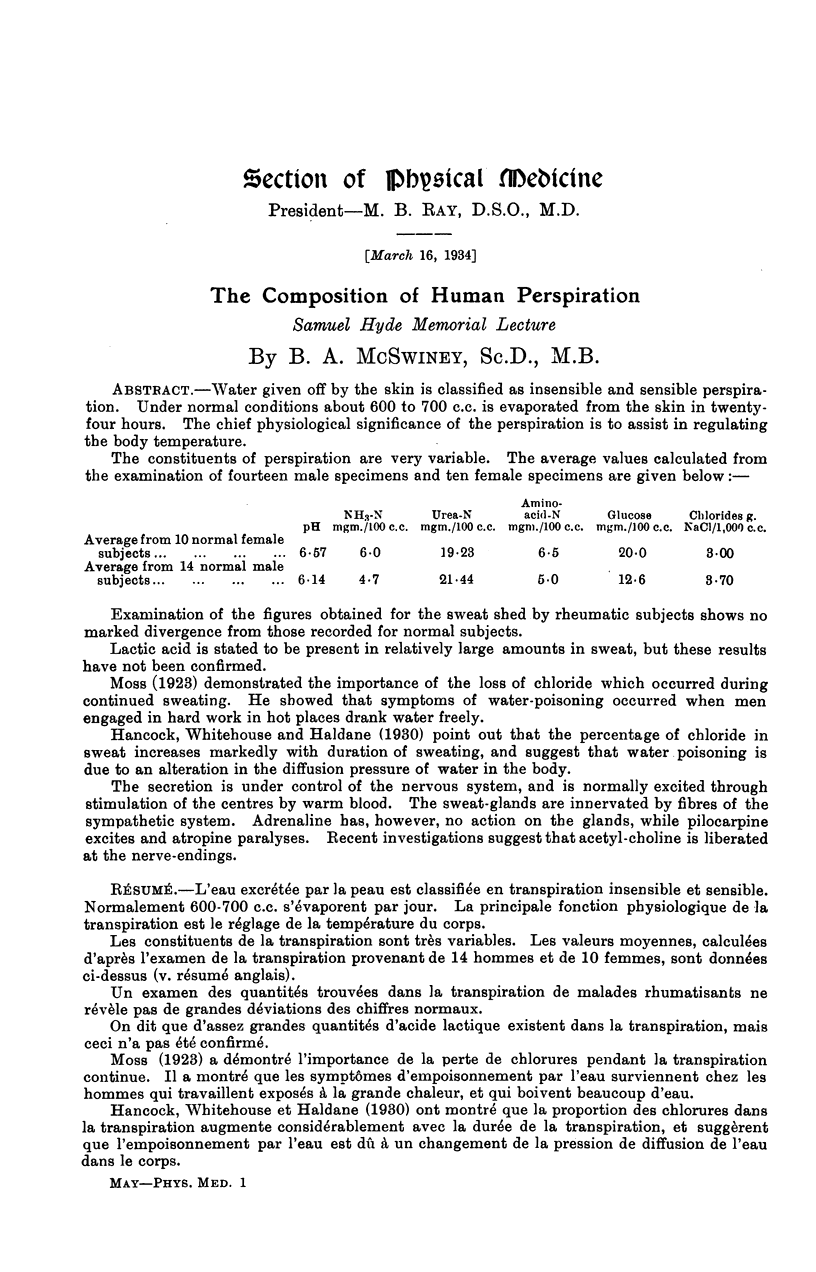


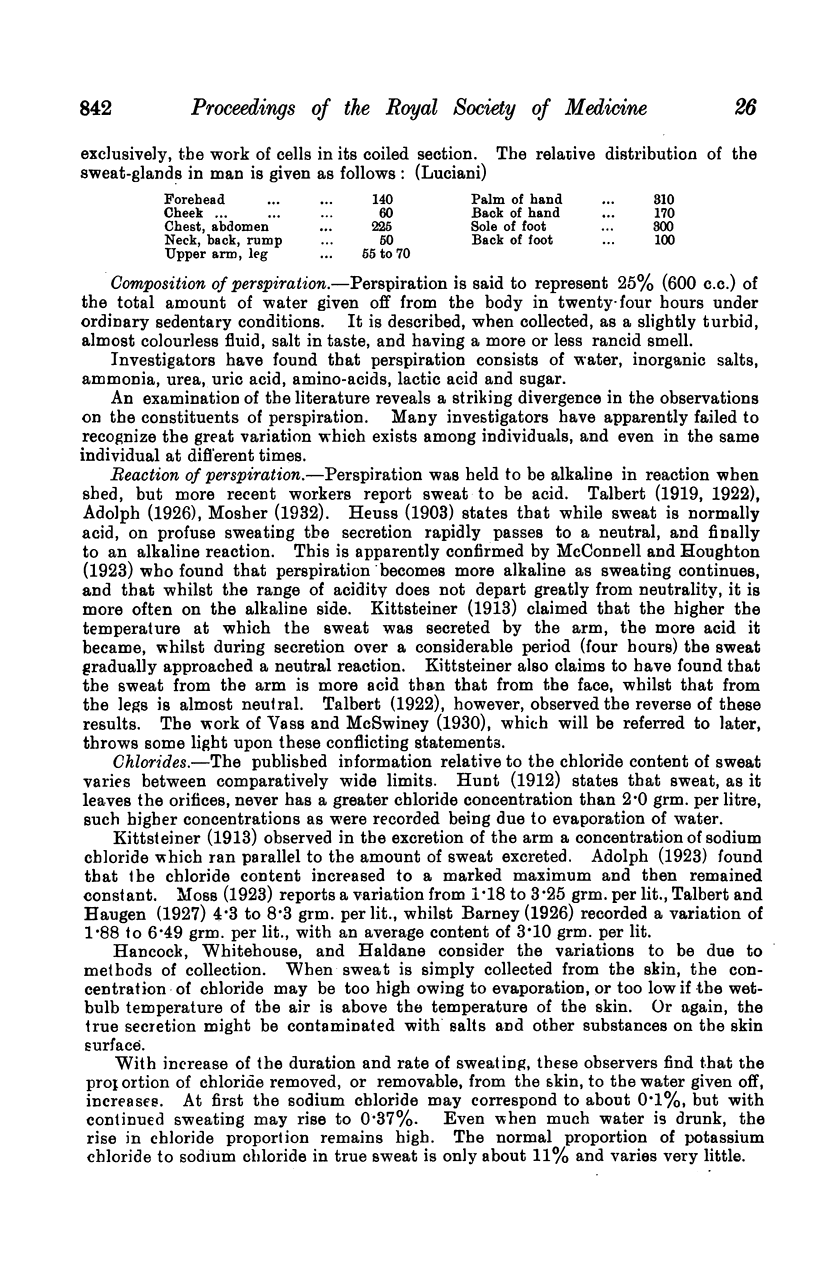
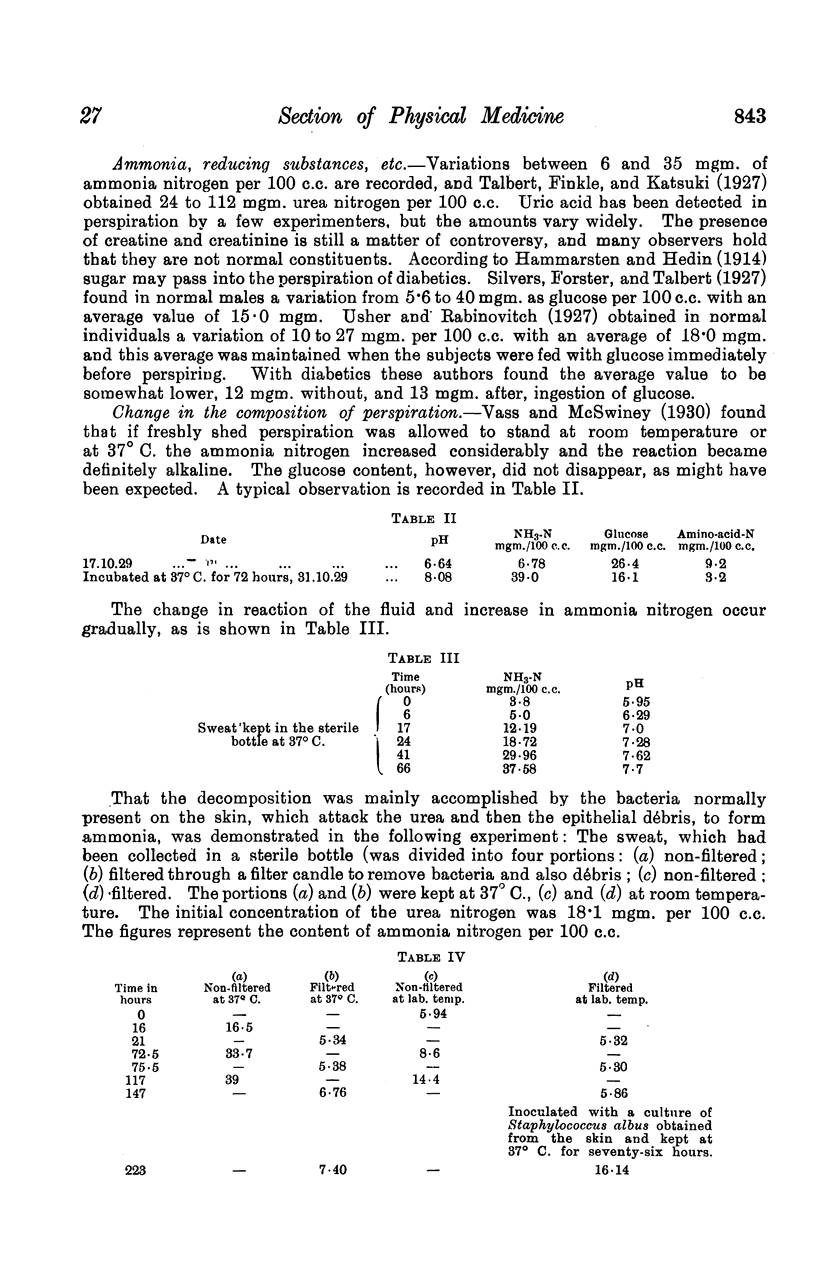
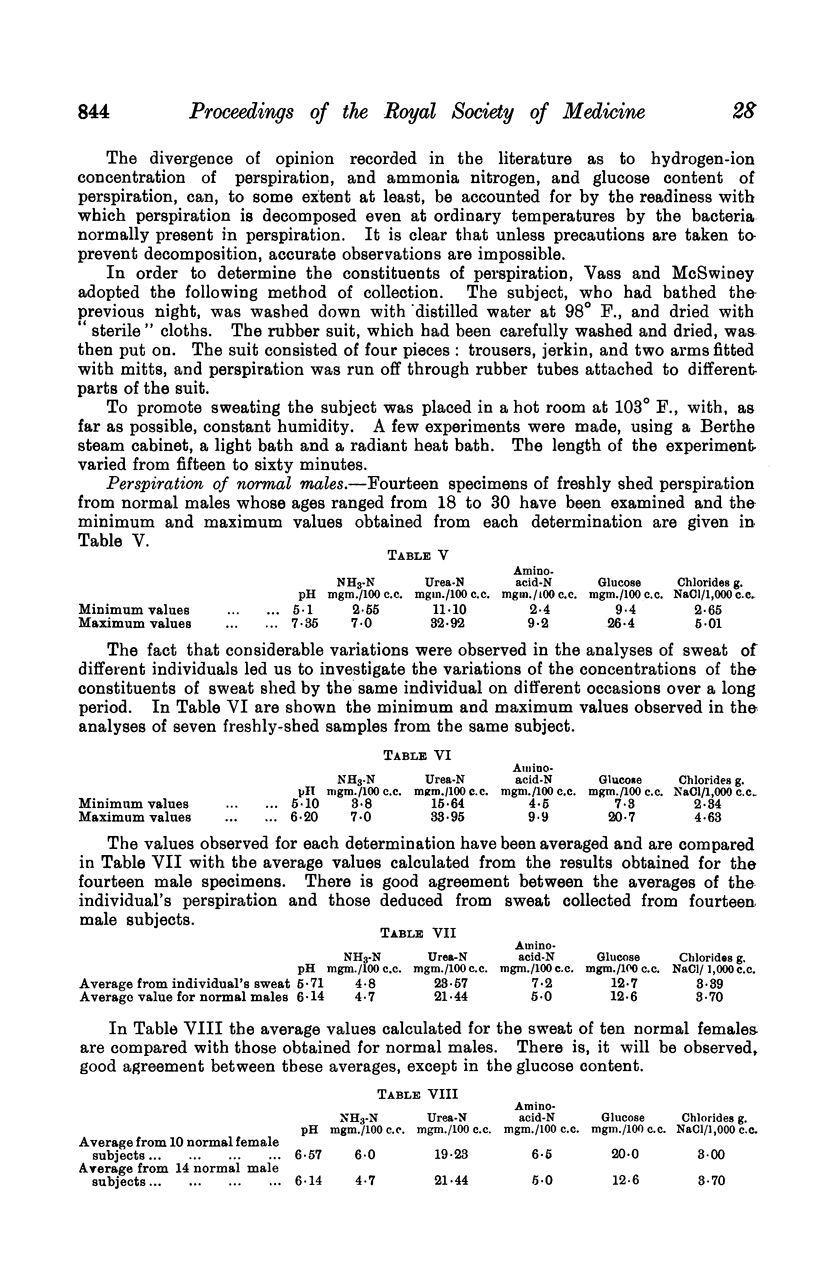
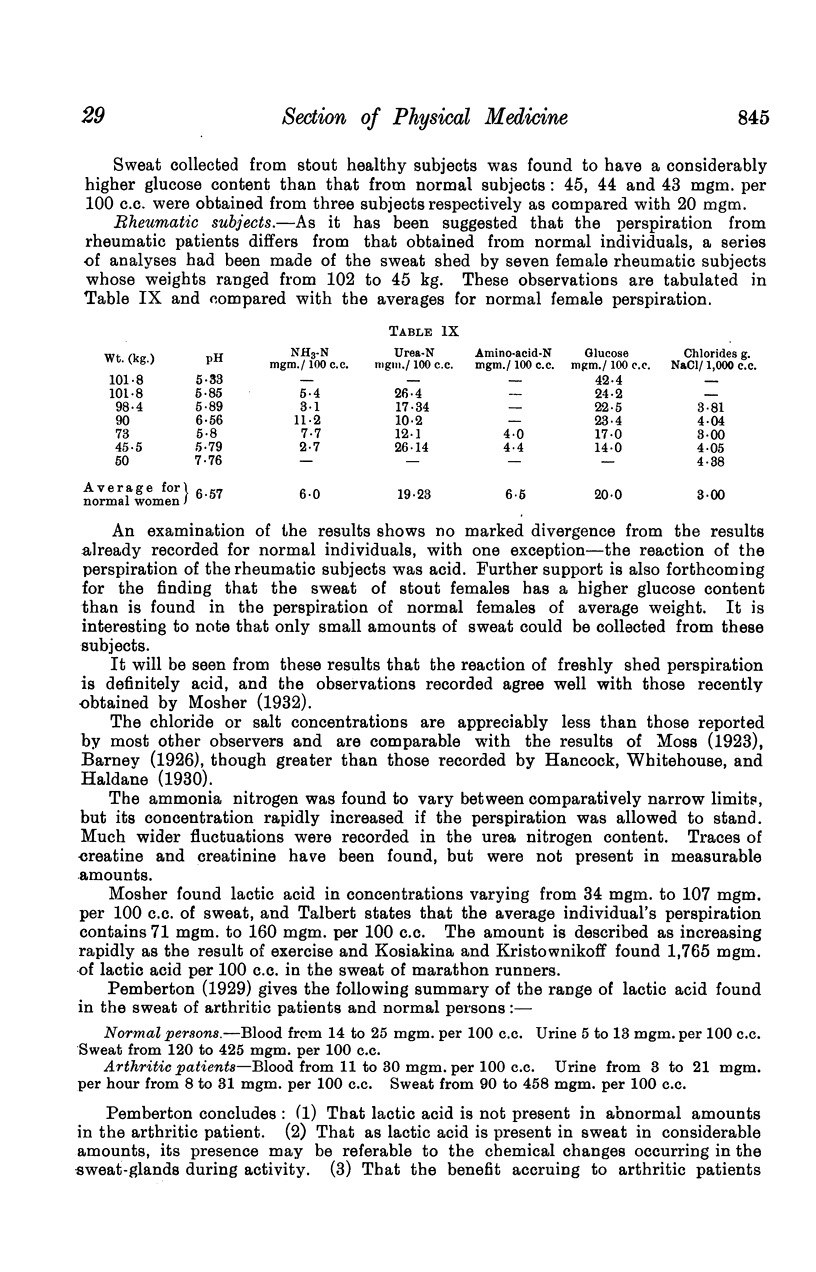
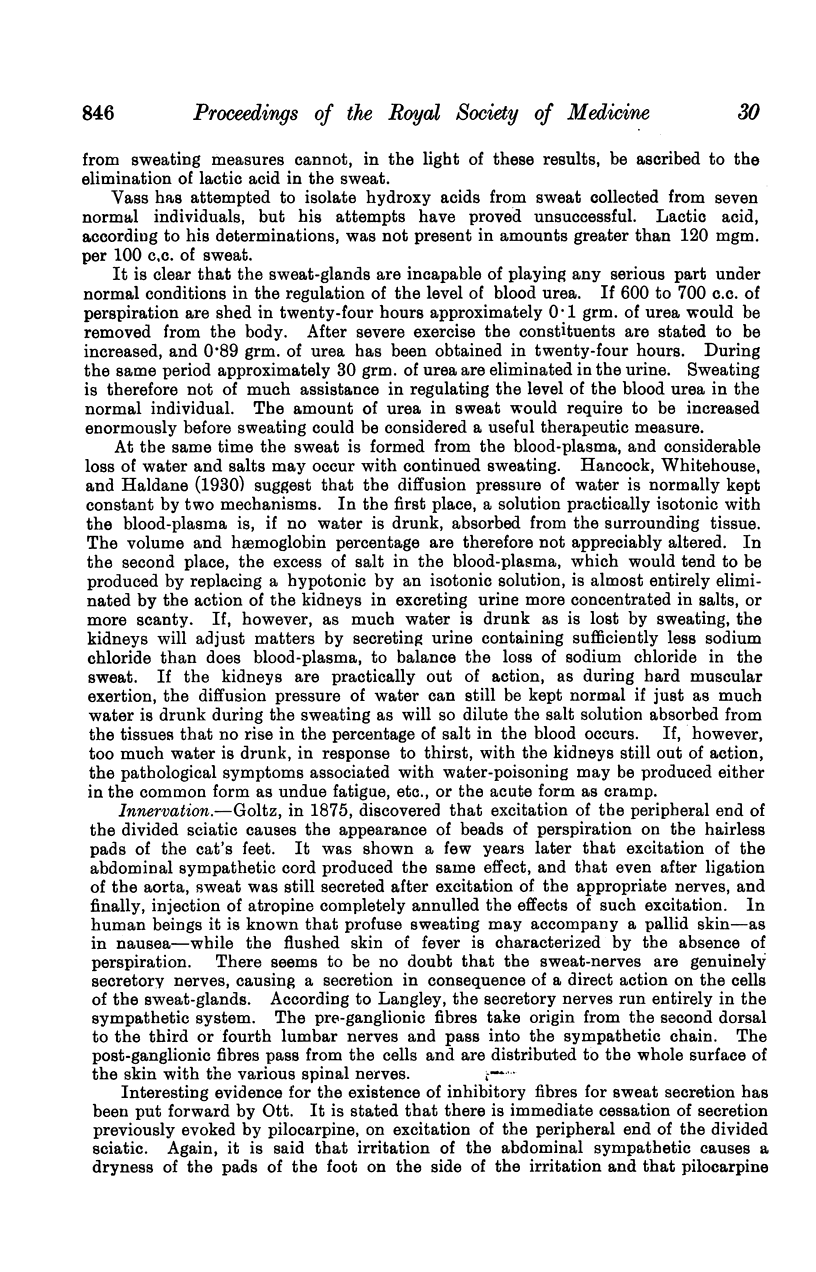
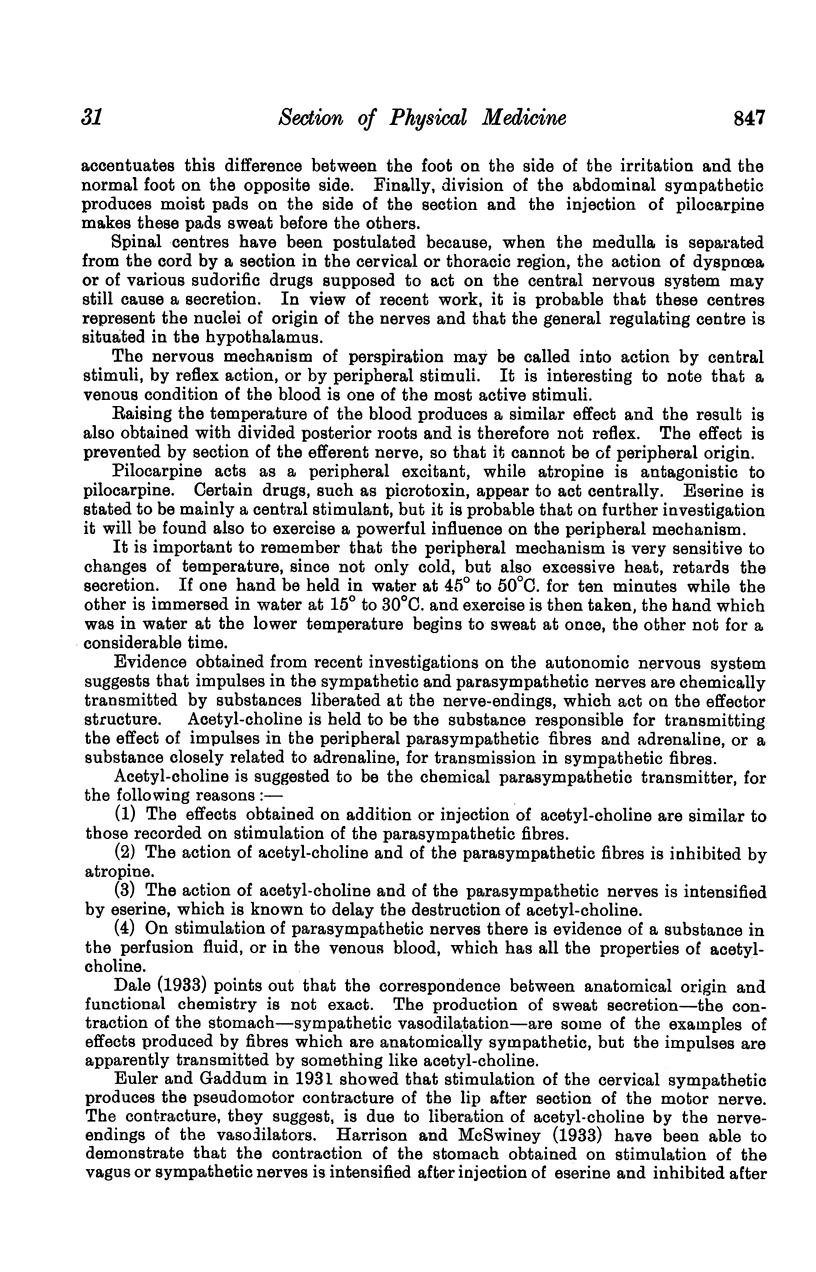
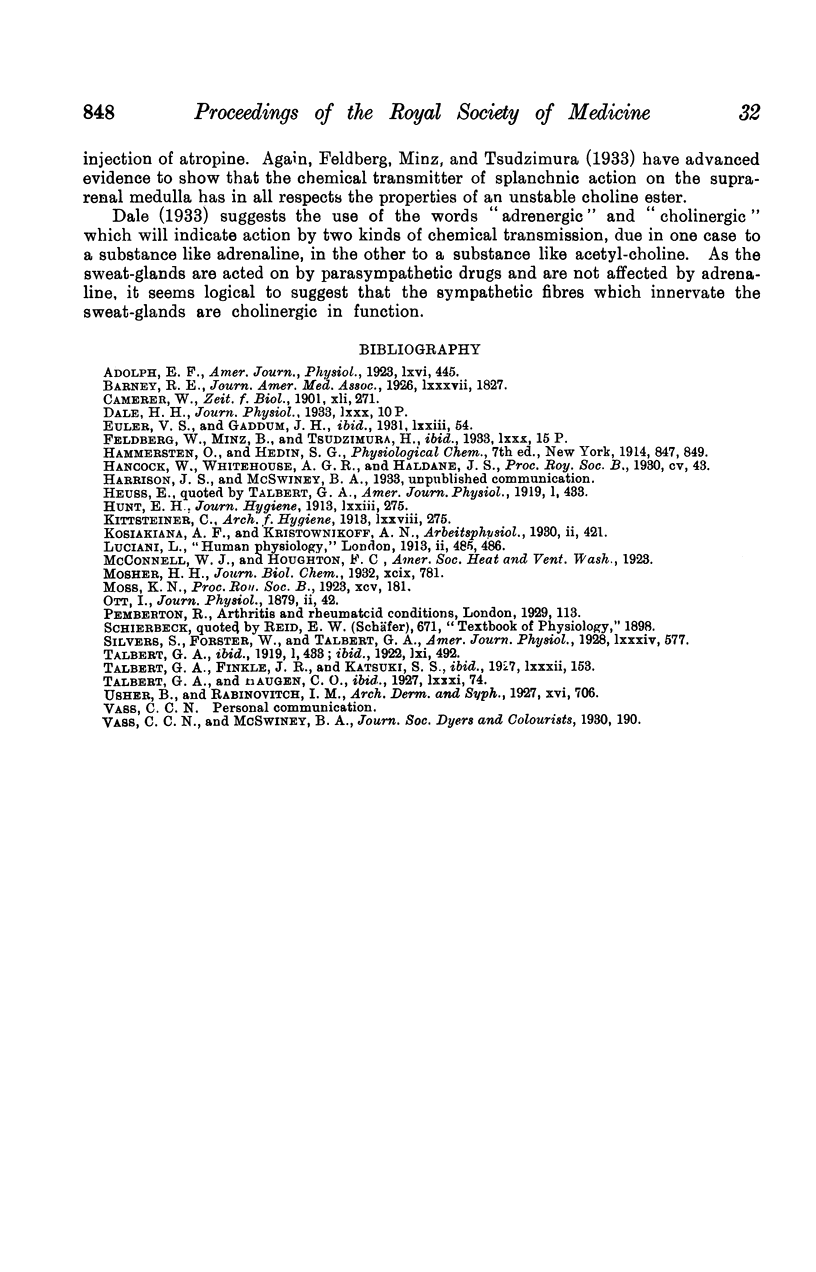
Selected References
These references are in PubMed. This may not be the complete list of references from this article.
- Ott I. Observations on the Physiology of the Spinal Cord. J Physiol. 1879 May 1;2(1):42–90.8. doi: 10.1113/jphysiol.1879.sp000045. [DOI] [PMC free article] [PubMed] [Google Scholar]


